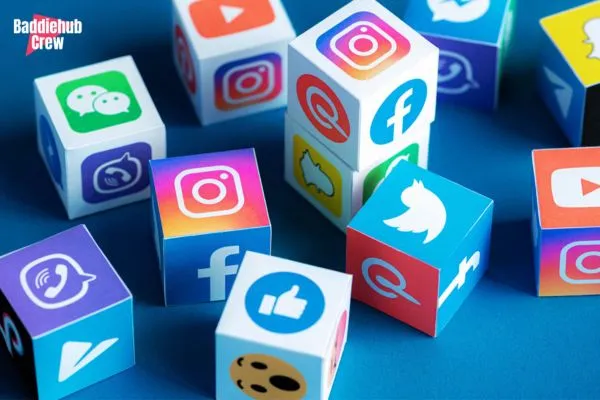
DIY Baddie Fashion: Creative Ways to Customize Your Outfits
October 17, 2024
The Baddie Blueprint: Strategies for Stylish Success
October 19, 2024The advancement of social media tells the story, from its early pre-internet roots to the major present day outlets that overwhelm our lives nowadays.However, with society constantly changing alongside emerging innovations, the future of online communities remains uncertain. This article will explore social media’s journey so far and consider various possibilities for what may come next.
A Brief History of Social Media
Pre-internet Roots
The origins of social media can be traced to early examples of community and communication. Pen pals exchanged letters in the postwar era, allowing faraway connections at a time when long-distance calls were rare. Bulletin boards seen in community spaces also served as an early public forum. Further, local newspapers published announcements and classified ads, functioning as a noticeboard for citizens. These practices foreshadowed the interconnected online networks to emerge.
The EarlyYears: Classmates.com (1995-1997)
As the buyer web started in the 1990s, spearheading stages propelled to cultivate advanced interaction. Classmates.com propelled in 1995 particularly to offer assistance clients reconnect with ancient school companions and classmates.It brought the first digitization of social networking. Then in 1997, SixDegrees.com arrived, allowing users to create profiles, lists of friends, and connect with others. Though it closed within three years, SixDegrees was seminal as the first site claiming to function as a true social network.
Early Networks Emerge: MySpace, LinkedIn (2002-2003)
Building upon these foundations, major services began taking shape. Friendster launched in 2002 and rapidly gained users looking to connect online through shared hometowns or schools. However, technical difficulties led many to abandon the platform. Meanwhile MySpace premiered in 2003 as a platform focused on music, personalization through HTML coding, and viral content sharing through friends. Its rising popularity demonstrated incentivized networked communication. LinkedIn also appeared in 2003 orientated towards professional networking.
Explosive Growth of Facebook (2004-2010)
When Facebook launched in 2004 exclusively for Harvard University students, it presented a cleaner interface than MySpace while enabling simpler friend connections. Rapidly expanding to other schools, the general public, and globally, it overtook MySpace in the late 2000s with 500 million users by 2010. Through constant product improvements and integration of new features appealing to desires for both private communication and public self-presentation, Facebook brought social media into the mainstream.
The Launch of Social Sites
As the internet developed, new platforms launched to foster online socializing. However, technological limitations at the time restricted user numbers. Still, seeds were planted for future growth.
Modern Social Media Outlets
, Facebook gave college understudies online profiles at to begin with. As it extended accessibility, client numbers detonated, coming to 300 million by 2009. Nowadays, with about 3 billion clients around the world, Facebook is the biggest and most prevalent social platform.Its all-encompassing nature serves as a advanced living room where individuals interface and share.
Reddit, propelled in 2005, contrasts as an open gathering social news accumulation location where enrolled clients yield, vote and comment on different substance. Comprising of thousands of specialty communities called subreddits, Reddit brought a modern demonstrate emphasizing community control and highlighted discourses. By 2022 it had over 50 million day by day dynamic clients.
Twitter’s dispatch in 2006 presented microblogging, where clients share brief content upgrades called tweets. As of now bragging over 330 million month to month dynamic clients, it serves as a real-time newswire affecting worldwide occasions and discussions. Lawmakers, celebrities, media and normal clients alike run to the stage to communicate compactly.
Propelled as a portable photo-sharing app in 2010, Instagram rapidly amassed over 1 billion clients by leveraging the rise of smartphone cameras and visual substance online. Its instinctive interface and center on aesthetics revolutionized how businesses and people minister online personalities through pictures and brief recordings.
Pinterest propelled in 2010 as an motivation disclosure motor, where clients browse and “stick” visual substance to make computerized pinboards on changing points. Pointed at interface like formulas, domestic stylistic layout or design, its positive tone sets it separated whereas collecting over 474 million month to month dynamic clients interested in way of life revelation.
Snapchat
Appealing mainly to younger demographics, Snapchat launched in 2011 centered on sharing temporary photo or video “snaps” between connections. Features like additional lenses and filters gave it widespread popularity, reaching over 500 million users daily by 2022 through its creative self-expression focus.
TikTok
Introduced in 2014 as musical.ly before rebranding in 2018, TikTok presented short-form entertainment videos as its core offering. Scaling at an extraordinary rate, it has grown into a global phenomena with over 1.5 billion monthly active users, demonstrating the immense interest in short attention-grabbing visual content.
Future of Social Media
What’s Next for Social Media?
After examining social media’s historical development, considerations around future possibilities include:
- Expansion of immersive virtual/augmented reality worlds as platforms.
- Increased live streaming across various genres of content.
- Deeper personalization of recommendations and personalized advertising.
- Further diversification into narrowly focused niche networks.
- Growing video preference marginalizing static photos and text.
- Possible disruption from decentralized blockchain-based models.
- Continued adoption among older demographics worldwide.
- Emergence of new ways to monetize creator and user contributions.
- Heightened regulatory scrutiny around privacy, misinformation and well-being.
- Potential integration with other technologies like AI, IoT, transportation.
Overall, as long as human connection and self-expression remain inherent needs, social media seems sure to perpetually transform alongside ongoing innovations.
Conclusion
Considering how greatly platforms have developed since their early days out of basic human desires to communicate and share, it’s fascinating to contemplate social media’s potential directions. While giants today dominate worldwide usage, new niches and technologies will forever incubate disruptions. Changes simultaneously presenting opportunities and challenges suggest an exciting ride ahead shaping global interaction and digital communities in presently unforeseeable ways. Progress appears inevitable as society and its relationship with technology evolve in tandem.
FAQs
Q: Can current major platforms become obsolete?
A: Platforms relying on specific demographics or closed to change risk obsolescence. Network effects make replacements difficult without failures to innovate.
Q: How will youth impact future trends?
A: As digital natives, Gen Z will influence through behaviors and interests. Their technology openness positions them to pioneer impacts sooner.
Q: What risks does continued evolution pose?
A: Issues include loss of privacy, spread of misinformation, overuse health impacts, amplified social divisions, vulnerabilities for online harms if technologies aren’t built responsibly. Strong regulation is key.

